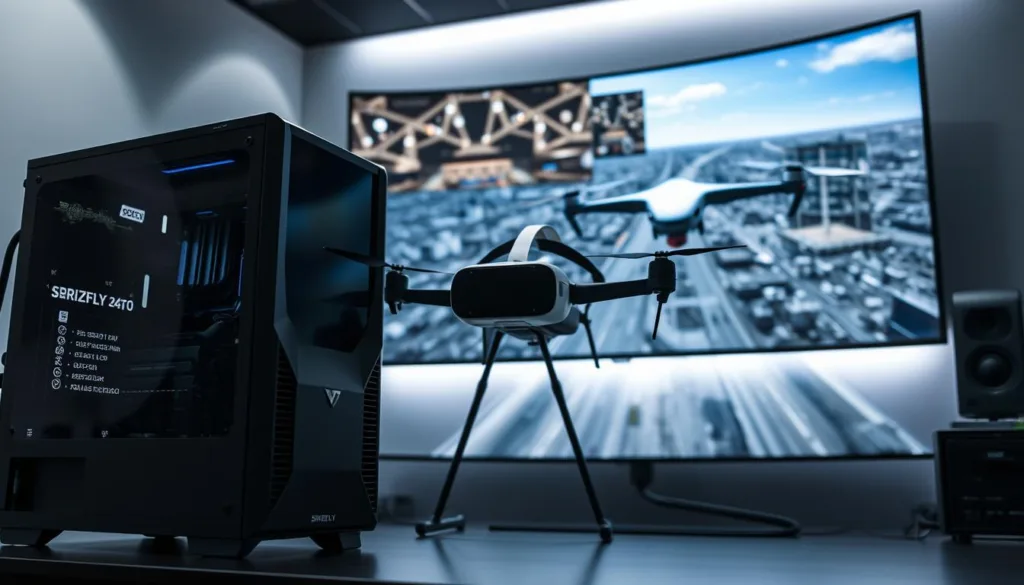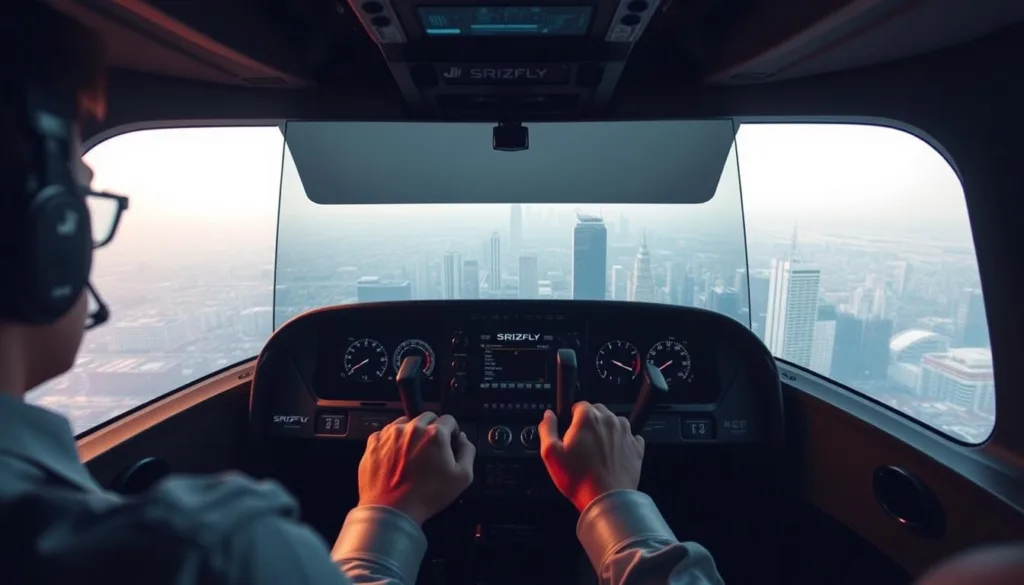Planning a drone training program requires careful evaluation of technology investments. Professional-grade flight simulation tools offer realistic practice environments, but their pricing structures often extend beyond initial purchase prices. This guide explores what organizations need to know about budgeting for these solutions while maximizing their training value.
The current market leader’s software ranges from $1,300 to $2,139, with seasonal discounts available through special offers. Savvy buyers can reduce expenses using limited-time promotional codes valid through late 2024. However, recent industry changes add new considerations – official support for this platform will transition to partner brands starting mid-2024.
Beyond the base price, operational costs include compatible hardware setups and potential subscription fees. Training managers should assess how simulated flight practice improves real-world pilot skills versus traditional methods. The right solution balances immersive digital experiences with sustainable budget planning.
Key Takeaways
- Professional flight simulation packages range from $1,300 to over $2,000 before discounts
- Limited-time promotions can significantly reduce upfront costs through 2024
- Support transitions require evaluating long-term update compatibility
- Total ownership costs include hardware, subscriptions, and accessories
- Realistic digital training improves operational safety and skill retention
- Partner-brand solutions now offer full controller compatibility
Introduction to DJI Simulator Enterprise
Modern drone operations demand precision and safety, driving the need for advanced preparation tools. Developed through a partnership with SRIZFLY™, this professional-grade platform transforms how pilots build expertise. Three specialized modules create adaptable learning paths: core skill development, open-environment practice, and scenario-based mission rehearsals.
Purpose of This Buyer’s Guide
This resource clarifies budgeting decisions by detailing both visible and hidden expenses. Whether managing a flight school or corporate training program, you’ll learn how to align technology investments with operational goals. We break down pricing models, partnership transitions, and long-term value factors.
Overview of the Simulator’s Role in Drone Training
Virtual practice environments eliminate weather delays and equipment damage risks while accelerating skill mastery. Flight instructors report 40% faster competency development compared to traditional methods. The software’s realism comes from direct integration with actual drone control systems, creating seamless transitions between simulation and field operations.
Features and Benefits of DJI Flight Simulator Enterprise
Mastering aerial operations requires tools that bridge virtual practice and real-world execution. This platform delivers hands-on learning through physics-driven environments, preparing pilots for everything from routine flights to high-pressure missions.
Realistic Flight Experience and Training Modules
The software recreates authentic aircraft behavior down to propeller vibrations and gust responses. “Trainees develop instinctive reactions to sudden weather changes,” notes a certified flight instructor. Three progressive modules guide users from basic hovering drills to complex scenarios like infrastructure inspections or emergency response simulations.
Dynamic wind patterns challenge pilots to adjust flight paths mid-mission, while crash physics demonstrate the consequences of errors without risking equipment. Multiple camera angles – including first-person and top-down views – build spatial awareness crucial for tight maneuvers.
Compatibility With Current Aircraft Systems
Pilots train on digital twins of popular aircraft like the Mavic 2 Pro or Matrice 210 RTK, ensuring seamless transitions to field operations. The system supports over 15 aircraft types across multiple series, including legacy models still used in professional fleets.
Direct controller integration means muscle memory developed in simulation translates directly to physical hardware. This alignment reduces retraining time and helps organizations standardize procedures across mixed equipment fleets.
Detailed Breakdown of dji simulator enterprise cost
Budgeting for professional training tools requires understanding both upfront and recurring expenses. The current pricing model balances premium features with flexible access, giving organizations multiple pathways to build pilot expertise. Let’s explore what drives the investment and how different teams can optimize their spending.
Base Price and Licensing Options
The software’s professional edition starts at $2,139, though seasonal promotions like code ‘BFCBONUS’ can lower this through December 2024. Three license types cater to specific needs:
Personal licenses suit solo operators refining their skills. Educational packages offer 30-40% discounts for schools, while organizational plans unlock unlimited training scenarios. One aviation academy director shared, “Our institution saved $12,000 annually through academic pricing.”
Subscription Fees Versus One-Time Purchase Models
Monthly subscriptions provide automatic updates and cloud storage – ideal for teams needing the latest features. Permanent licenses work better for stable programs without frequent tech changes. Aerial survey companies often prefer owning software outright, while emergency response units value subscription-based access to new disaster simulations.
Promotional periods remain critical for cost-conscious buyers. Last year’s holiday sale dropped prices to $1,300, highlighting how timing affects budgets. Whether leasing or buying, the goal stays the same: developing competent pilots through risk-free practice.
Hardware and Software Requirements for Optimal Simulation
Building a reliable training setup starts with matching your tech to the software’s demands. While the program itself handles virtual scenarios, your hardware determines how smoothly those simulations run. Let’s explore what keeps everything humming.

Recommended System Specifications
Think of your processor as the pilot – it needs to handle complex calculations quickly. Entry-level setups use chips like the G4560 for basic drills. For serious training, aim for an i5-6400 or better. “High-intensity scenarios demand at least a GTX 1060 graphics card,” advises a simulation tech specialist.
Memory matters too. While 16GB RAM works for solo flights, 32GB prevents lag during multi-drone exercises. Storage speed impacts loading times – SSDs cut wait periods between missions by half compared to traditional drives.
Additional Accessories and Their Costs
Your existing drone controller won’t cut it. Authentic practice requires specific remote units that sync with the software. These specialized devices range from $150 to $600 depending on aircraft models.
Don’t forget the operating system. The software only runs on Windows 10 64-bit, so Mac users need partition setups. While upfront costs seem steep, proper gear creates lifelike practice that translates directly to field success.
Comparing DJI Simulator Enterprise with Competitors
Choosing the right training tool means weighing features against budgets. While multiple options exist, each serves different skill levels and operational needs. Let’s see how specialized solutions stack up against general-purpose alternatives.
Unique Integration With DJI Technology
No other platform replicates actual aircraft behavior this precisely. Competitors like Zephyr Drone Simulator ($99-$139) support older DJI models but lack real-time physics modeling. “The software mirrors our Matrice 300’s response to crosswinds perfectly,” shares a utility company trainer.
Third-party tools often use generic flight mechanics. DJI’s solution syncs with proprietary controllers, building muscle memory for field operations. This seamless transition helps pilots master advanced maneuvers faster than with DroneSimPro ($10) or FPV Air 2.
Price Comparison and Value Proposition
Entry-level simulators attract hobbyists but falter in professional settings. DRL SIM 3.0 excels for racing yet lacks inspection scenario modules. While DJI’s platform costs more upfront, its mission-specific training reduces real-world error rates.
Educational institutions report better ROI through reduced equipment damage. One flight school director notes, “Our crash incidents dropped 65% after switching to this system.” For teams needing authentic practice environments, the investment pays dividends in operational safety and skill retention.
Subscription vs. One-Time Purchase Models
Organizations investing in professional training tools face a critical financial crossroads. The flight simulator enterprise platform offers two payment pathways, each with distinct advantages for different operational needs. Let’s explore how these models shape long-term budgeting and software accessibility.

Advantages of the Subscription Model
Monthly plans transform software access into predictable operational expenses. Teams gain automatic updates matching new aircraft versions and mission types. “We stopped worrying about outdated training scenarios,” shares a drone program coordinator from a Midwest energy company.
Priority technical support minimizes downtime during critical training periods. Cloud-based user management simplifies scaling for growing teams, while fixed costs help financial planners avoid budget surprises.
Benefits of a One-Time Investment
Permanent licenses suit organizations with stable, repeatable training workflows. After the initial payment, teams control upgrade timing – ideal for operations using consistent software versions. A coastal search-and-rescue unit reported 22% annual savings after switching to this model.
Ownership eliminates recurring fees but requires planning for optional major updates. This approach works best when paired with long-term equipment strategies, ensuring training relevance without constant budget adjustments.
Additional Costs and Investment Considerations
Expanding your training capabilities involves more than software selection. Physical components play a crucial role in creating lifelike practice environments. Teams often discover unexpected needs during setup that impact their overall budget.
Hardware Upgrades and Additional Controller Costs
Not all existing equipment works with modern flight simulators. Many organizations need upgraded graphics cards or processors to handle detailed physics modeling. For example, practicing with Mavic Air models requires specific drones flight controllers that mimic real-world responsiveness.
Specialized remote units for newer aircraft often cost $200-$500 each. Some training centers invest in multiple controllers to accommodate different pilot preferences. Maintenance plans for these devices add another layer to long-term budgeting.
Future-proofing your setup matters too. As software updates introduce advanced features, older hardware might struggle to keep pace. Planning for periodic tech refreshes ensures your team stays ahead of operational demands without sudden financial surprises.
FAQ
What factors influence the pricing of the enterprise training solution?
The total investment depends on licensing options, subscription plans, and hardware requirements. For example, one-time purchases or multi-user licenses may suit long-term training needs, while monthly subscriptions offer flexibility for short-term projects.
Are there ongoing fees, or is it a single payment?
You can choose between subscription-based access or a permanent license. Subscriptions include updates and support, while a one-time purchase locks in features without recurring charges.
What computer specs are needed to run the software smoothly?
A Windows PC with at least an Intel i5 processor, NVIDIA GTX 1080 graphics, and 16GB RAM ensures optimal performance. Lower specs might struggle with high-quality rendering during complex missions.
Which drones are compatible with the training software?
The platform supports popular models like the Matrice series, Mavic Air 2, and Inspire 2. It mimics real-world controls for aerial photography, inspections, and other professional workflows.
How does it compare to other simulation tools in the market?
Unlike generic alternatives, this solution integrates seamlessly with DJI flight controllers and camera systems. This ensures accurate replication of flight dynamics for pilots mastering advanced maneuvers.
Are extra accessories required for the best experience?
While basic setups work with standard joysticks, adding enterprise-grade remote controllers or motion platforms enhances realism. These upgrades vary in price but are optional for most users.
Does the software support advanced scenarios like inspections or rescue missions?
Yes! Custom training modules cover power line inspections, emergency response drills, and low-light operations. Pilots can practice with adjustable weather conditions and terrain challenges.



